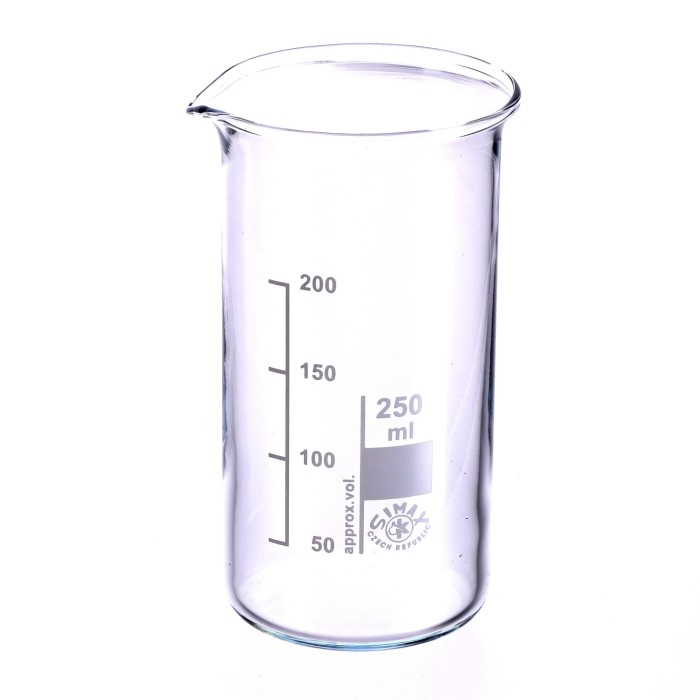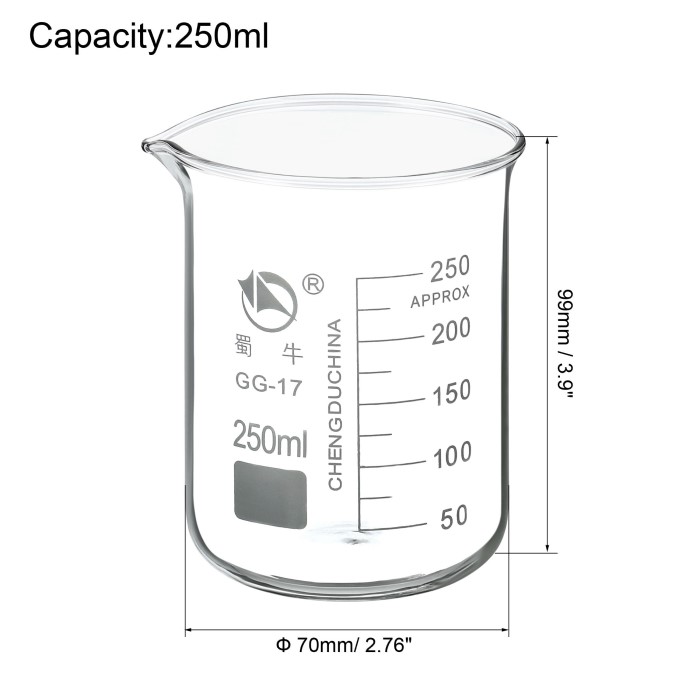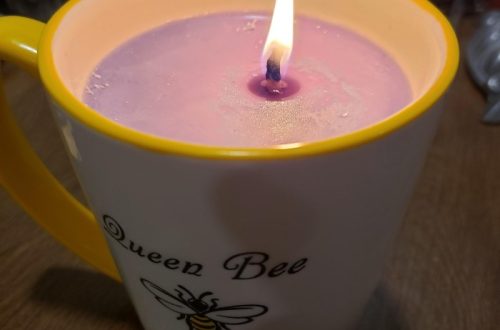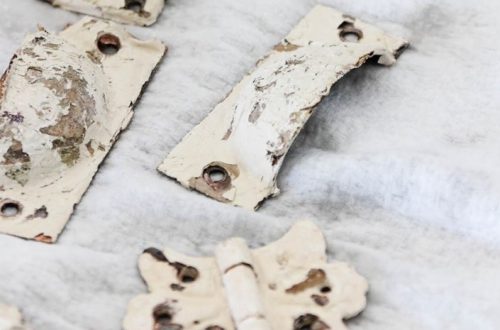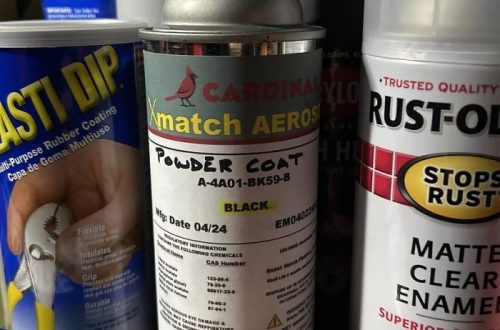Introduction
The 250 ml beaker is a common laboratory tool. It is used for various purposes in science, education, and beyond. Beakers are essential for mixing, heating, and measuring liquids in controlled environments.
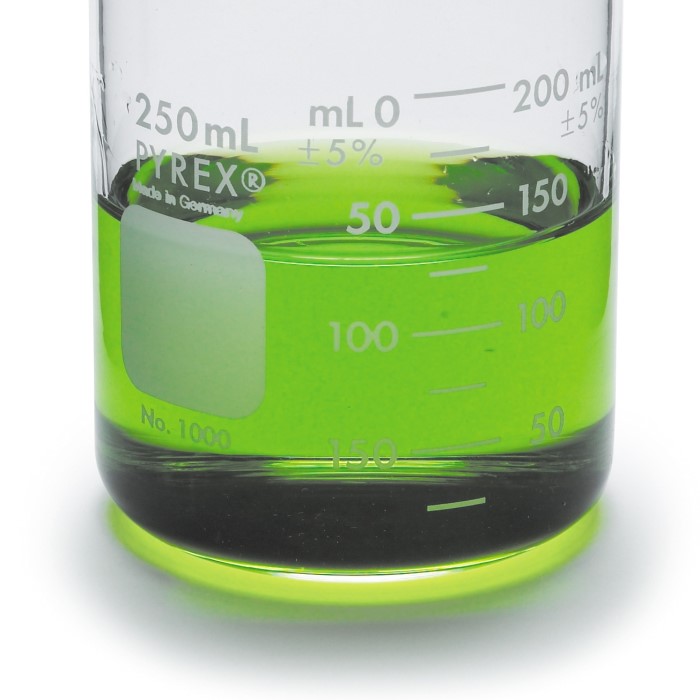
Overview and General Description
A 250 ml beaker is a cylindrical container with a flat base. It typically has a spout for easy pouring. Its size and capacity make it ideal for tasks requiring precise liquid measurements. Beakers of this capacity are compact yet functional, fitting easily within most lab setups.
Most 250 ml beakers have graduated markings along the sides. These markings help in estimating liquid volumes. However, they are not as accurate as other specialized measuring tools like pipettes. Despite this, their simplicity and durability make them highly versatile.
Materials Used in Manufacturing
250 ml beakers are commonly made from glass or plastic. Glass beakers are usually borosilicate glass, known for its heat and chemical resistance. This material makes them ideal for high-temperature applications or when working with reactive chemicals.
Plastic beakers, on the other hand, are made from materials like polypropylene. These are lightweight, durable, and resistant to breaking. Plastic beakers are preferred when portability or handling fragile equipment is a concern. Both materials ensure the reliability and usability of the 250 ml beaker in different settings.
Common Uses
A 250 ml beaker is a versatile tool used across various applications. Its design and durability make it indispensable in laboratories, schools, and even homes. Below are its most common uses.
Laboratory Experiments
The 250 ml beaker is central to laboratory work. It is used to hold and heat liquids. Researchers and scientists mix solutions, conduct chemical reactions, and test experimental setups using it. Its sturdy design ensures safety during high-temperature or chemical-intensive experiments. The beaker’s spout allows easy transfer of liquids without spills, and its size is perfect for small to medium-scale experiments.
Measuring and Mixing Liquids
A 250 ml beaker is ideal for measuring and mixing liquids. Graduated markings on the side help estimate volumes. While not highly precise, these markings are sufficient for most tasks. It is also useful for preparing solutions or diluting substances. This makes it a critical instrument in laboratories, schools, and industrial settings.
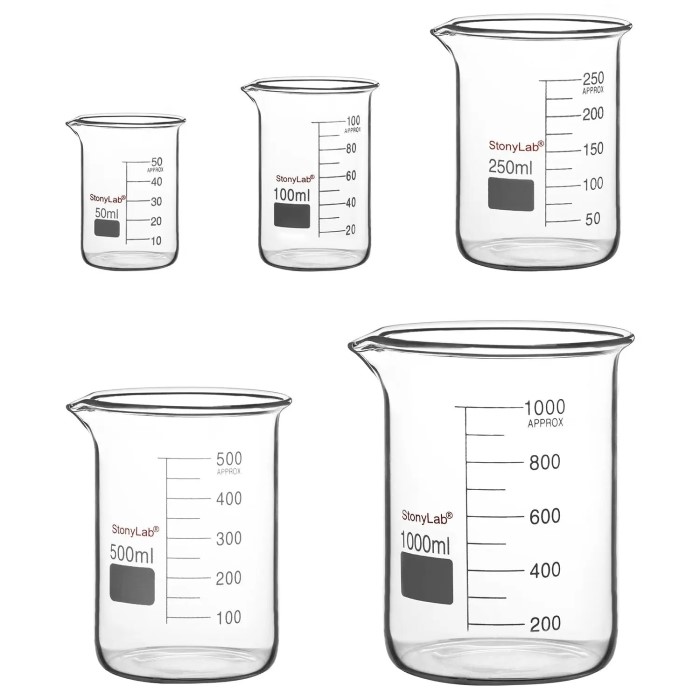
Educational Purposes in Schools
In classrooms, the 250 ml beaker is a teaching staple. It is used in science demonstrations and experiments. Students learn basic concepts like measurement, chemical reactions, and solution preparation with its help. Its manageable size and durable materials make it suitable for young learners, ensuring a safe and practical learning experience.
Features of a 250 ml Beaker
The 250 ml beaker stands out for its practical design and essential features. These characteristics make it highly reliable in labs, schools, and various projects.
Standard Dimensions and Capacity
A 250 ml beaker is compact yet functional. It has a cylindrical shape with a flat base. Its 250 ml capacity is ideal for small to medium-scale tasks. This size fits conveniently in most setups, making handling simple and efficient. The spout adds ease of pouring, minimizing spills. This standardized design ensures its compatibility with various laboratory procedures and educational experiments.
Markings for Accurate Measurement
Graduated markings are a key feature of the 250 ml beaker. These lines help estimate liquid volumes accurately. While not as precise as advanced tools, they are practical for general use. The markings are clear and easy to read, even for beginners. They allow users to measure and mix solutions effectively in educational settings, DIY projects, or experiments.
Heat and Chemical Resistance
250 ml beakers are made from materials like borosilicate glass or polypropylene. Borosilicate glass is resistant to heat and chemicals, making it ideal for high-temperature tasks. It ensures safety during chemical reactions and heating. Plastic beakers, like those made from polypropylene, resist breakage and chemical damage. Both materials enhance durability, reliability, and overall performance in demanding environments.
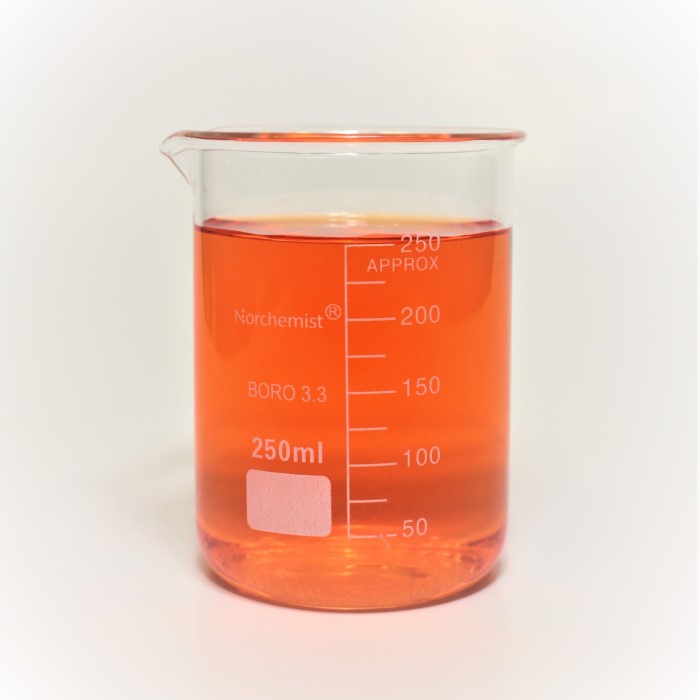
Types
Beakers come in different types to suit various needs. Each type offers unique advantages.
Glass Beakers
Glass beakers are made from borosilicate glass. This material resists heat and chemicals exceptionally well. You can use them in high-temperature experiments without worrying about damage. They are ideal for chemical reactions due to their durability. Glass beakers provide clarity, allowing users to see the contents easily.
Plastic Beakers
Plastic beakers are often made from polypropylene. They are lightweight and resistant to breaking. These are useful for environments where easy handling and portability are necessary. Plastic beakers work well in schools or field-based activities. They are durable and less likely to shatter compared to glass.
Specialty Beakers
Specialty beakers are designed for specific tasks. Some have unique shapes or added features for advanced experiments. Examples include beakers with reinforced rims, angled spouts, or insulated materials. These are ideal for industries needing specialized tools or complex applications. Specialty beakers are tailored to enhance precision and performance across diverse fields.
Maintenance and Care for Beakers
Proper maintenance ensures the durability and functionality of your 250 ml beaker. Regular cleaning and correct storage are essential to keep it in good condition.
Cleaning Guidelines
Rinse Immediately After Use
- Immediate Action: It is crucial to rinse the beaker right after use to eliminate any residual substances, which can otherwise lead to unwanted reactions or contamination in future experiments.
- Prevent Staining: Rinsing promptly helps to prevent staining caused by pigments or chemical residues that may adhere to the surfaces, making future use less safe and effective.
- Buildup Prevention: By removing residues immediately, you avoid the accumulation of buildup over time, which can impair the accuracy of measurements and introduce errors in experimental outcomes.
Use Mild Detergent
- Gentle Cleaning: When washing the beaker, opt for a mild detergent combined with warm water, as this combination effectively cleans without damaging the material or altering its properties.
- Avoid Abrasive Cleaners: It is important to refrain from using harsh or abrasive cleaners that can scratch the surface of the beaker, leading to wear and weakening the structure over time.
- Safe for All Materials: A mild detergent is generally safe for all types of beakers, including glass and plastic, ensuring that the material integrity is preserved during cleaning.
Handle with Care
- Temperature Sensitivity: Glass beakers, in particular, are sensitive to temperature changes, and handling them carelessly can result in thermal shock and cracks.
- Avoid Sudden Changes: It’s best to avoid subjecting the beaker to rapid heating or cooling, as this can create stress in the glass. Allow the beaker to adjust gradually to temperature changes to maintain its integrity.
- Use Safety Equipment: When handling hot beakers, always use protective gloves or tongs to ensure your safety and protect the beaker from accidental drops or impacts.
Use a Soft Brush
- Effective Cleaning Tool: If residues are stubborn or difficult to remove, use a soft brush specifically designed for laboratory glassware to gently scrub the interior surfaces.
- Prevent Scratches: A soft brush helps to clean without scratching the surface of the beaker, maintaining its clarity and functionality.
- Access Hard-to-Reach Areas: The flexibility of a soft brush allows for effective cleaning in all areas of the beaker, ensuring that no residue is left behind, especially in corners and intricate designs.
Sterilize When Necessary
- High-Precision Tasks: For experiments that require a sterile environment or high precision, it is essential to sterilize the beaker to eliminate any potential contaminants.
- Methods of Sterilization: Sterilization can be achieved through methods such as using an autoclave, which utilizes high pressure and steam, or employing suitable chemical solutions designed for sterilization.
- Regular Protocol: Establish a routine for sterilizing beakers before critical experiments, particularly in microbiological or biochemical applications, to maintain the integrity and reliability of results.
Proper Storage Practices
Dry Thoroughly
- Complete Drying Necessary: After cleaning, it’s crucial to dry the beaker thoroughly to eliminate any residual moisture that could lead to issues later.
- Prevent Water Spots: Leftover water can create unsightly spots and stains on the beaker’s surface, affecting its appearance and potentially interfering with measurements.
- Avoid Mold Growth: Drying the beaker completely helps prevent mold or mildew growth, which can occur in damp environments and compromise the integrity of future experiments.
Store Upright
- Upright Positioning: Always store the beaker in an upright position to minimize the risk of spills and accidental tipping, which can lead to breakage or contamination.
- Stable Surface: Place the beaker on a flat and stable surface to further reduce the chances of it falling over, ensuring it’s secure during storage.
- Easier Access: Storing beakers upright facilitates easy access and retrieval when needed, allowing for efficient workflow in the lab or workspace.
Avoid Cluttered Areas
- Dedicated Storage Space: It’s important to designate a specific area for storing beakers, free from clutter, to minimize the risk of mishaps.
- Minimize Risks: A clutter-free environment lowers the likelihood of accidents, such as knocking over beakers or misplacing them among other lab equipment.
- Organized Environment: Keeping storage organized not only enhances safety but also improves efficiency, making it easy to find beakers when needed.
Separate Glass and Plastic Beakers
- Designated Compartments: If you have both glass and plastic beakers, make sure to store them in separate compartments or containers to prevent confusion and damage.
- Reduce Damage Risk: Separating the types minimizes the risk of glass beakers breaking from contact with harder plastic counterparts and prevents scratches on sensitive surfaces.
- Clear Identification: Using distinct storage areas for each beaker type helps with organization, allowing users to quickly identify and retrieve the correct beaker for their needs.
Protect Specialty Beakers
- Extra Care for Delicate Beakers: Specialty beakers, which may be made of thinner glass or have intricate designs, require additional protection when stored.
- Use of Padding or Covers: Employ protective measures such as padding, bubble wrap, or cushioned storage compartments to absorb shocks and prevent breakage.
- Minimize External Risks: During storage, ensure that specialized beakers are shielded from potential hazards, such as sharp objects or heavy items, that could cause damage over time.
Maintaining your 250 ml beaker with these simple steps ensures its longevity and reliability in different uses.
Where to Buy a 250 ml Beaker
If you’re seeking a 250 ml beaker, multiple buying options are available. They vary based on convenience, cost, and preferred purchasing method. Let’s explore some practical ways to get your hands on this essential tool.
Popular Retailers
Local science supply stores are a reliable source for 250 ml beakers. These stores often carry high-quality brands suited for laboratory use. Educational supply shops also stock them, especially for school-related experiments. Retail chains like hardware and specialty stores sometimes sell plastic or multipurpose beakers. Visiting retailers allows you to inspect items before buying.
Online Shopping Options
Shopping online offers convenience and variety. E-commerce platforms like Amazon or eBay have numerous beaker options. Sellers provide both glass and plastic types, along with detailed product descriptions. Science-focused websites and supplier portals, such as Fisher Scientific or VWR, specialize in laboratory equipment. Search filters help you find the perfect 250 ml beaker for your needs. Online reviews guide you toward reliable products.
Cost Considerations
250 ml beakers come in a range of prices. Basic plastic beakers are more affordable, starting at just a few dollars. Glass beakers, due to their durability and heat resistance, cost more. Specialty beakers for advanced applications can be pricier. Bulk purchases often reduce costs, especially for schools or labs. When buying online, factor in shipping fees to understand the full cost. Balancing quality and budget ensures you make a worthwhile purchase.
Applications Across Different Fields
The 250 ml beaker serves versatile purposes across various professional and everyday settings. Its practicality and durability make it a valuable tool in science, industry, and even home projects. Below, we explore its key applications.
Scientific Research
In scientific research, the 250 ml beaker is a fundamental laboratory tool. Scientists use it to mix chemical solutions, heat substances, or carry out reactions. Its heat and chemical-resistant materials make it reliable for experiments. The graduated markings help researchers estimate volumes accurately during analysis. This beaker is also compact enough to fit in most lab setups, ensuring efficiency and safety.
Industrial Use
In industrial settings, the 250 ml beaker supports processes such as quality control and material testing. It is used to measure, mix, or transfer liquids in various industries, including pharmaceuticals, food processing, and manufacturing. Plastic beakers are often preferred for fieldwork due to their lightweight and shatter-resistant design. Glass options are reserved for tasks requiring heat exposure or visible observation.
DIY and Household Projects
A 250 ml beaker is useful for DIY projects and everyday household applications. It can help with tasks like measuring ingredients, mixing cleaning solutions, or preparing homemade cosmetics. The beaker’s user-friendly design, with a spout for pouring and easy-to-read markings, ensures convenience. Its manageable size is advantageous for small-scale activities, making it a staple for hobbyists and homeowners alike.
Conclusion: Embracing the 250 ml Beaker in Laboratories
In conclusion, the 250 ml beaker is an essential tool for modern laboratories. Its versatile applications, from measuring to mixing and heating, make it a staple in scientific settings. Understanding its features, uses, and care ensures optimal performance and longevity. Whether in academic, research, or industrial environments, the 250 ml beaker continues to play a crucial role in advancing scientific inquiry and education. As technology continues to influence laboratory practices, the humble beaker remains a foundational element of scientific exploration.
